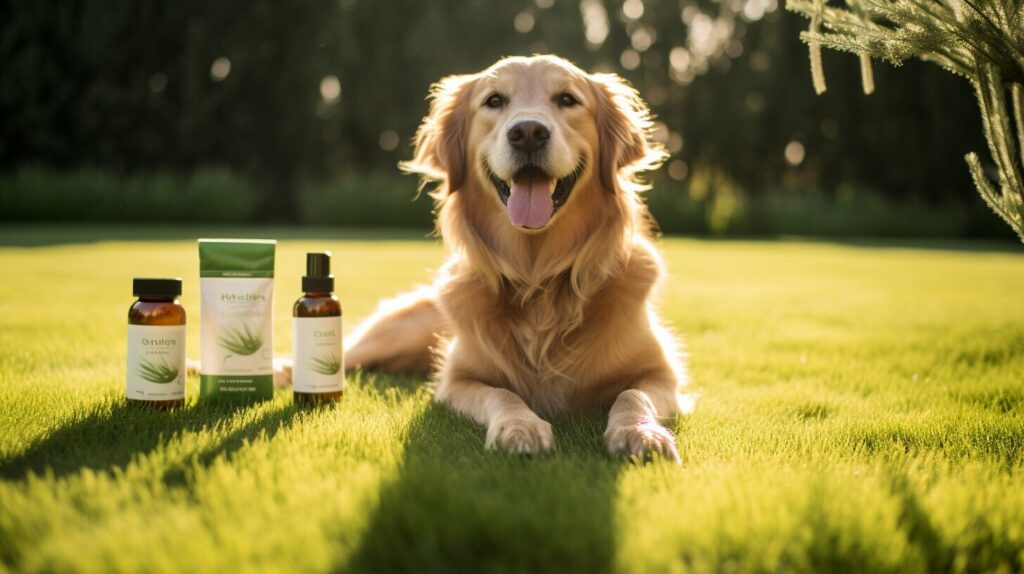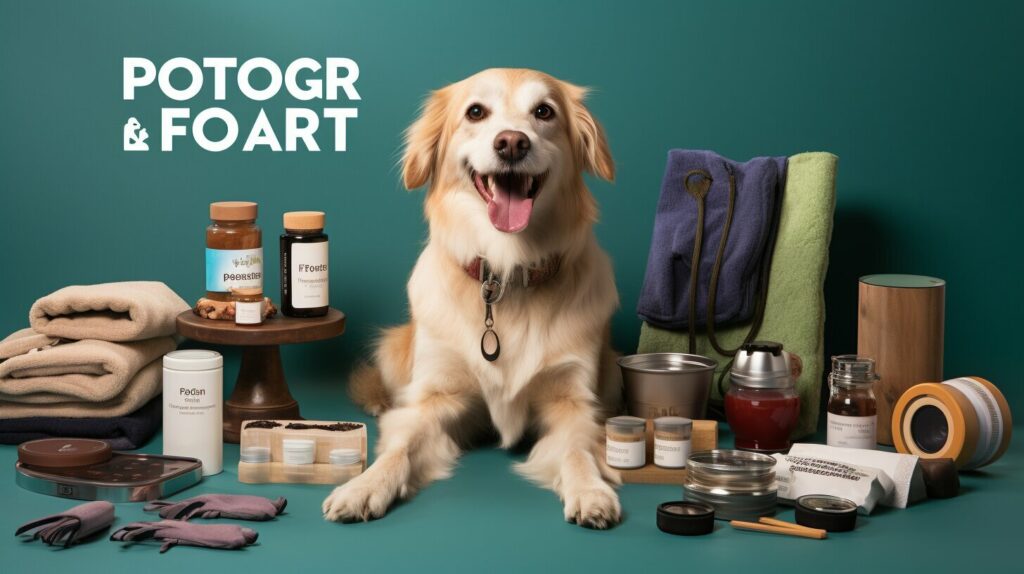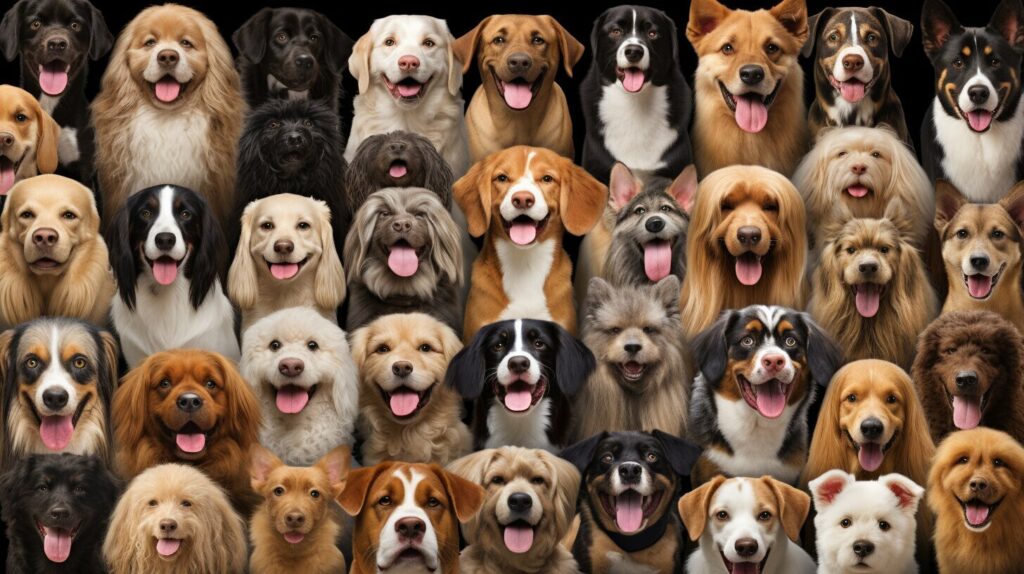When it comes to taking care of your furry friend, it’s important not to neglect their paws. Paws dogs require regular attention to maintain their health and well-being.
Proper dog paw care involves more than just ensuring that their nails are trimmed. You must also clean and moisturize their paws regularly, identify and prevent potential injuries, and keep an eye out for signs of infection or other problems.
Key Takeaways:
- Regular paw care is essential for your paws dog’s overall health and well-being.
- Cleaning and moisturizing your dog’s paws can prevent potential infections and injuries.
- It’s important to choose paw-friendly surfaces both indoors and outdoors.
- Be aware of signs of paw problems and seek professional veterinary care when necessary.
Understanding Dog Paws
As a paw parent, it’s important to understand the anatomy of your dog’s paws and the common problems that can occur.
Dogs have four paws, each containing five toes. The paw pads on the underside of their paws act as shock absorbers and provide traction on different surfaces. The nails, or claws, are used for digging, gripping, and protecting the paws.
| Common Paw Problems | Description |
|---|---|
| Cracked paw pads | When the paw pads become dry, they can crack and bleed, causing pain and discomfort. |
| Yeast infections | A fungus that can grow in warm, moist areas such as between the toes, causing redness, itching, and odor. |
| Bacterial infections | Bacteria that can enter through small cuts or scrapes on the paw and cause swelling, redness, and discharge. |
| Ingrown nails | When the nail grows into the paw pad, it can cause pain, inflammation, and infection. |
| Foreign objects | Objects such as rocks, glass, or thorns can become lodged in between the toes or paw pads, causing pain and infection. |
Proper paw care can help prevent these common problems and keep your dog’s paws healthy and happy. Regular paw inspections and maintenance are key to identifying and addressing issues before they worsen.
Regular Paw Cleaning
Regular paw cleaning is essential for maintaining healthy paws in dogs. Your dog’s paws come into contact with various surfaces and substances, which can cause dirt, debris, and bacteria to accumulate. Not cleaning your dog’s paws can lead to infections, discomfort, and even limping.
To properly clean your dog’s paws, you will need a clean towel, warm water, and a mild soap or paw wash solution. Follow these simple steps:
- Gently wipe your dog’s paws with a clean towel to remove any loose dirt or debris.
- Fill a basin or sink with warm water and add a small amount of soap or paw wash solution.
- Place one paw at a time into the water and use your hand or a soft brush to lather the soap or solution onto the paw.
- Rinse the paw with warm water and remove any excess soap by wiping with a clean towel.
- Repeat with all paws.
After cleaning your dog’s paws, make sure to dry them thoroughly to prevent moisture from getting trapped between the paw pads, which can lead to fungal and bacterial infections. You can use a clean towel or a blow dryer on a low, warm setting to dry your dog’s paws.
Regular paw cleaning should be incorporated into your dog’s grooming routine to keep their paws healthy and clean. It is especially important to clean your dog’s paws after outdoor activities or when they come into contact with salt, chemicals, or other potentially harmful substances.
Preventing Paw Injuries
When it comes to your dog’s paws, prevention is key. By taking some simple precautions, you can avoid many common paw injuries and help keep your pet healthy and happy.
First, always keep your dog’s claws trimmed. Long claws can easily become caught in carpets, grass, or other surfaces, which can cause discomfort or even injury. Be sure to trim your dog’s claws regularly, and if you’re uncomfortable doing it yourself, ask your vet or a professional groomer for help.
Next, watch out for sharp or rough surfaces that could cut or scrape your dog’s paws. Broken glass, rocks, and uneven pavement can all cause painful injuries. Make sure to keep your dog on a leash and avoid walking on surfaces that could be dangerous for their paws.
Additionally, be mindful of the weather. During the summer, hot pavement or sand can burn your dog’s paws, while in the winter, snow and ice can cause frostbite or dry out their paw pads. Consider investing in booties to protect your dog’s paws from extreme temperatures.
Frequently Asked Questions
| Q: | What should I do if my dog injures their paw? |
|---|---|
| A: | If your dog injures their paw, clean the area with warm water and a mild soap. Cover the wound with a clean cloth or bandage and seek veterinary care. |
| Q: | How can I protect my dog’s paws during outdoor activities? |
| A: | Invest in a pair of dog booties to protect your pet’s paws from rough terrain or extreme temperatures. Always check surfaces before allowing your dog to walk on them, and avoid areas with sharp objects or other hazards. |
By being proactive and taking steps to prevent common paw injuries, you can help keep your dog healthy and happy for years to come.
Moisturizing and Protecting Paw Pads
Moisturizing and protecting your paws dog’s paw pads is just as important as other aspects of paw care. The paw pads are responsible for shock absorption and provide traction on various surfaces. Without proper moisturization, they can become dry and cracked, leading to discomfort and potential injuries.
There are several paw balms, creams, and moisturizers available in the market that are specifically formulated for canines. When choosing the product, make sure it is free from artificial fragrances and harsh chemicals that can be harmful to your dog’s skin.
Before applying the moisturizer, ensure that the paw pads are clean and dry. Take a small amount of the moisturizer and gently massage it into the paw pads. Make sure to cover all areas, including the spaces between the toes.
In addition to moisturizing, protecting your dog’s paw pads is also crucial. During extreme weather conditions, such as hot pavement or cold snow, the paw pads can become injured or burned. To prevent this, you can use protective boots or wax-based products to create a barrier between the paw pads and the surface.
Regular moisturizing and protection of your paws dog’s paw pads will keep them healthy and prevent discomfort and injuries.
Nail Care for Paws Dogs
Proper nail care is an essential aspect of dog paw care. Neglecting your dog’s nails can lead to discomfort, pain, and infection. Overgrown nails can also affect your dog’s gait and cause joint problems. Therefore, regular nail maintenance is crucial.
There are different types of dog nail trimmers available, such as guillotine, scissor, and grinder. Choose the one that you are most comfortable with and that is suitable for your dog’s nail size and thickness.
It’s recommended to start nail trimming when your dog is still a puppy, so they get used to the process. Begin by handling your dog’s paws and touching their nails regularly. This will help reduce anxiety and ensure a smoother nail trimming experience later on.
The frequency of nail trimming depends on your dog’s lifestyle and activity level. Dogs who spend more time outside on rough surfaces may naturally wear down their nails more and need less frequent trimming. However, a general rule of thumb is to trim your dog’s nails every 4-6 weeks.
When trimming your dog’s nails, avoid cutting the quick, which is the blood vessel and nerve in the nail. Cutting the quick can cause pain and bleeding. If you are unsure how far to trim, you can use a nail grinder or file to gradually shorten the nails.
If your dog’s nails are dark and you cannot see the quick, trim small amounts at a time, or seek advice from a professional or veterinary technician. Additionally, if you notice any signs of redness, swelling, or bleeding after trimming your dog’s nails, contact your veterinarian.
Regular nail care is not only beneficial for your dog’s paw health, but it also promotes good behavior and strengthens the bond between you and your furry companion.
Dealing with Paw Infections
As a paws dog owner, it’s essential to know the common paw infections and their symptoms. Paw infections can be caused by bacteria, yeast, viruses, or allergens. It’s essential to seek veterinary assistance immediately if you notice any of the following signs:
- Limping or reluctance to walk
- Redness or swelling in the paw
- Bleeding or discharge
- Foul odor
- Excessive licking or chewing of the paws
If left untreated, paw infections can lead to serious complications, including the spread of infection to other parts of the body.
To prevent paw infections, it’s crucial to keep your dog’s paws clean and dry. After every walk or outdoor activity, make sure to examine their paws for any cuts, scrapes, or foreign objects. Avoid walking your dog on contaminated surfaces, such as areas with feces or urine. Additionally, make sure your dog’s nails are trimmed regularly to avoid puncture wounds.
If you suspect your dog has a paw infection, bring them to the veterinarian right away. Treatment may include antibiotics, topical ointments, or antifungal medications depending on the cause of the infection. Your veterinarian may also recommend changes in diet or environmental factors to prevent future infections.
By being diligent about paw care and recognizing the signs of infection, you can help keep your paws dog healthy and happy.
Seasonal Paw Care
It’s crucial to adjust your dog’s paw care routine according to the different seasons throughout the year. Extreme temperatures and harsh weather conditions can take a toll on your dog’s paws, causing discomfort, pain, or even injuries.
During the winter months, your dog’s paws are exposed to freezing temperatures, snow, and ice. De-icing products, such as salt or chemicals, can also irritate the paw pads and cause cracking or bleeding. To protect your dog’s paws, consider using dog booties or paw wax to provide an extra layer of insulation. When you’re out for a walk, avoid areas with de-icing products or rinse your dog’s paws with warm water after the walk.
During the summer months, your dog’s paws are exposed to hot pavements, sand, and asphalt. These surfaces can cause burns or blisters on the paw pads. To prevent paw injuries, walk your dog during the cooler parts of the day, or on grassy and shaded areas. You can also apply paw wax or moisturizer to reduce friction and provide a cooling effect on the paws.
Whatever the season, make sure to inspect your dog’s paws after each walk for signs of injury or irritation. If you notice any redness, swelling, or bleeding, contact your vet as soon as possible. With regular paw care and attention to seasonal changes, you can keep your dog’s paws healthy and happy all year round.
Choosing Paw-Friendly Surfaces
As a responsible pet owner, you want to ensure that your furry friend’s paws are always healthy. One way to do this is by being mindful of the surfaces they walk on. Certain types of surfaces can be rough and abrasive, causing paw damage or injuries. Therefore, it’s essential to choose paw-friendly surfaces both inside and outside your home.
When indoors, consider using carpets or rugs that are soft and comfortable for your dog to walk on. Hardwood or tiled floors can be slippery and cause your pet to slip and injure themselves. If you have hardwood floors, you can place area rugs or mats in high-traffic areas to provide a soft, non-slip surface for your dog.
When outside, be mindful of hot pavements during the summer months, as they can burn your dog’s paw pads. You can prevent this by walking your dog during cooler times of the day or using paw protectors. In the winter, consider using pet-safe de-icing products on your walkways to avoid harsh chemicals that can damage your pet’s paws.
Gravel, rocks, and other rough surfaces can also be detrimental to your dog’s paw health. Avoid walking your dog on these surfaces, especially if they have sensitive paw pads or have recently undergone paw surgery. Instead, choose flat, even surfaces like grass or dirt.
Choosing paw-friendly surfaces will not only prevent paw injuries but also promote healthy paw maintenance. By being mindful of the surfaces your dog walks on, you’re taking another important step in ensuring their overall well-being.
Signs of Paw Problems in Dogs
As a responsible pet owner, it is essential to regularly inspect your furry friend’s paws to ensure optimal paw health. Your dog’s paws are susceptible to a variety of problems, including injuries, infections, and other issues that can cause discomfort and pain. Here are some common signs of paw problems in dogs that you should look out for:
- Limping: If your dog is limping or favoring one leg, it may be due to a paw injury or pain.
- Redness or swelling: Inflamed or swollen paws may indicate an injury or infection, requiring prompt medical attention.
- Licking or chewing their paws: Excessive licking, chewing, or biting their paws can be a sign of an allergic reaction, paw injury, or infection.
- Changes in gait: Any changes in the way your dog walks or runs should be assessed by a veterinarian, as it may be an indicator of an underlying paw issue.
- Bleeding or discharge: Any bleeding or discharge from the paw or between the toes should be examined by a veterinarian, as it could be due to an infection or injury.
If you notice any of these symptoms, it is crucial to seek veterinary attention promptly. Delaying treatment can cause the problem to worsen, leading to more significant and potentially costly health issues in the long run.
It is crucial to keep in mind that some paw problems may not show any visible symptoms, such as internal injuries or infections. Regular inspections and preventive care are critical to maintaining optimal paw health in your furry friend.
Conclusion
Now that you understand the importance of caring for your paws dog’s paws, you can take the necessary steps to ensure their paw health. Remember to regularly clean their paws, prevent injuries, and moisturize and protect their paw pads. Don’t forget about nail care and seasonal adjustments to paw care routines. It’s also crucial to choose paw-friendly surfaces to avoid damaging their paws.
Keep an eye out for any signs of paw problems in your dog, and seek veterinary assistance when necessary. By prioritizing their paw health, you can ensure that your paws dog leads a happy and healthy life.
FAQ
Q: Why is paw care important for dogs?
A: Paw care is important for dogs because their paws are their main mode of transportation and support. Proper paw care helps maintain their overall health and prevents discomfort or injuries.
Q: How often should I clean my dog’s paws?
A: It is recommended to clean your dog’s paws after every outdoor walk or activity. This helps remove dirt, debris, and potential irritants that may accumulate between their paw pads.
Q: What should I use to clean my dog’s paws?
A: You can use plain warm water or a mild pet-safe cleanser to clean your dog’s paws. Avoid using harsh chemicals or soaps that can be harmful to their skin.
Q: How can I prevent paw injuries in my dog?
A: To prevent paw injuries, ensure your dog’s environment is free from hazards such as sharp objects, hot surfaces, or rough terrain. You can also consider using protective paw booties in extreme conditions.
Q: Can I moisturize my dog’s paw pads?
A: Yes, moisturizing your dog’s paw pads can help keep them hydrated and prevent dryness or cracking. Look for paw balms or moisturizers specifically formulated for dogs.
Q: How often should I trim my dog’s nails?
A: The frequency of nail trimming depends on your dog’s activity level and how quickly their nails grow. On average, nails should be trimmed every 4-6 weeks to maintain a proper length.
Q: What are the signs of a paw infection in dogs?
A: Signs of a paw infection in dogs may include redness, swelling, discharge, limping, or excessive licking of the paws. If you notice these symptoms, it’s important to seek veterinary assistance.
Q: How can I protect my dog’s paws during extreme weather conditions?
A: To protect your dog’s paws during extreme weather conditions, you can use paw wax or booties to shield them from hot pavement or cold snow. Limiting exposure to extreme temperatures is also important.
Q: What surfaces are paw-friendly for dogs?
A: Paw-friendly surfaces for dogs include grass, dirt, and rubberized materials. Avoid surfaces like hot pavement, sharp rocks, or salted concrete, which can cause discomfort or injuries.
Q: What are the signs of paw problems in dogs?
A: Signs of paw problems in dogs may include limping, swelling, excessive licking, changes in gait, or visible injuries. Regularly inspecting your dog’s paws can help identify any issues early on.



